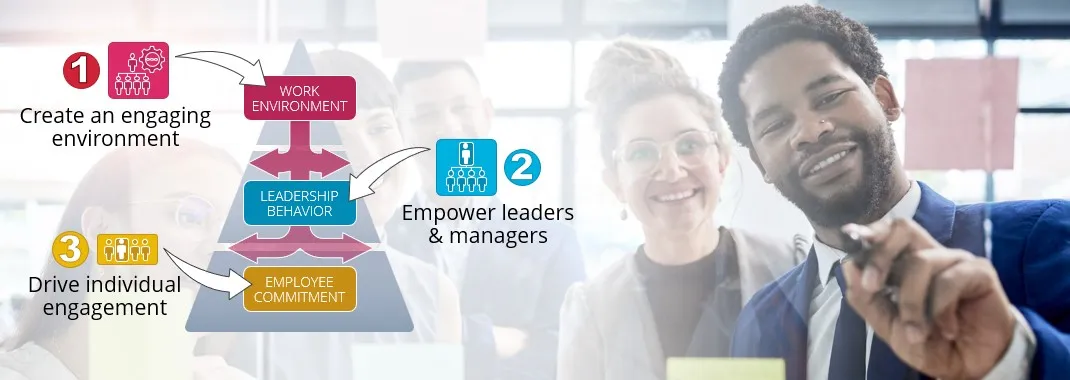After COVID-19, many workplaces struggled with trust issues. Research shows that only 46% of leaders trust their managers to do the right thing, and an even smaller 32% trust their senior leadership. That’s a big deal—trust is the foundation for teamwork, engagement, and great results. Without it, everything else starts to crumble.
Investing in leadership skills training in the classroom is not enough to guarantee that leaders will be effective or that their teams will excel. The most impactful development and application of leadership skills occur on the job, where leaders learn through direct experience in dynamic, real-world settings.
Most employee engagement solutions overlook the fundamental role of individual employees, leaving them as passive bystanders in their own engagement journeys. However, employee engagement is a two-way contract between the employee and the organization, guided by its leadership.
As organizations evolve and adapt to a rapidly changing workplace, leadership development is no longer confined to traditional training methods. 1st-time managers and supervisors are embracing technology to enhance their skills and build leadership capabilities, making it critical for businesses to harness the right tools to support this growth.
Traditional, centralized, top-down employee engagement work is incongruent with the uncertainty and dynamic nature of the future of work. As such, conventional engagement surveys hold the inherent risk of not fully capturing the personal nature of engagement, limiting OD practitioners’ ability to implement sustainable organizational improvements.
The recent Gallup State of the Workplace Report revealed that employee engagement and well-being levels in the U.S. have decreased in the past 12 months. This downward trend is not surprising given the current turbulence from political divides, labor market uncertainty, and economic hardship. However, this is only part of the story.






